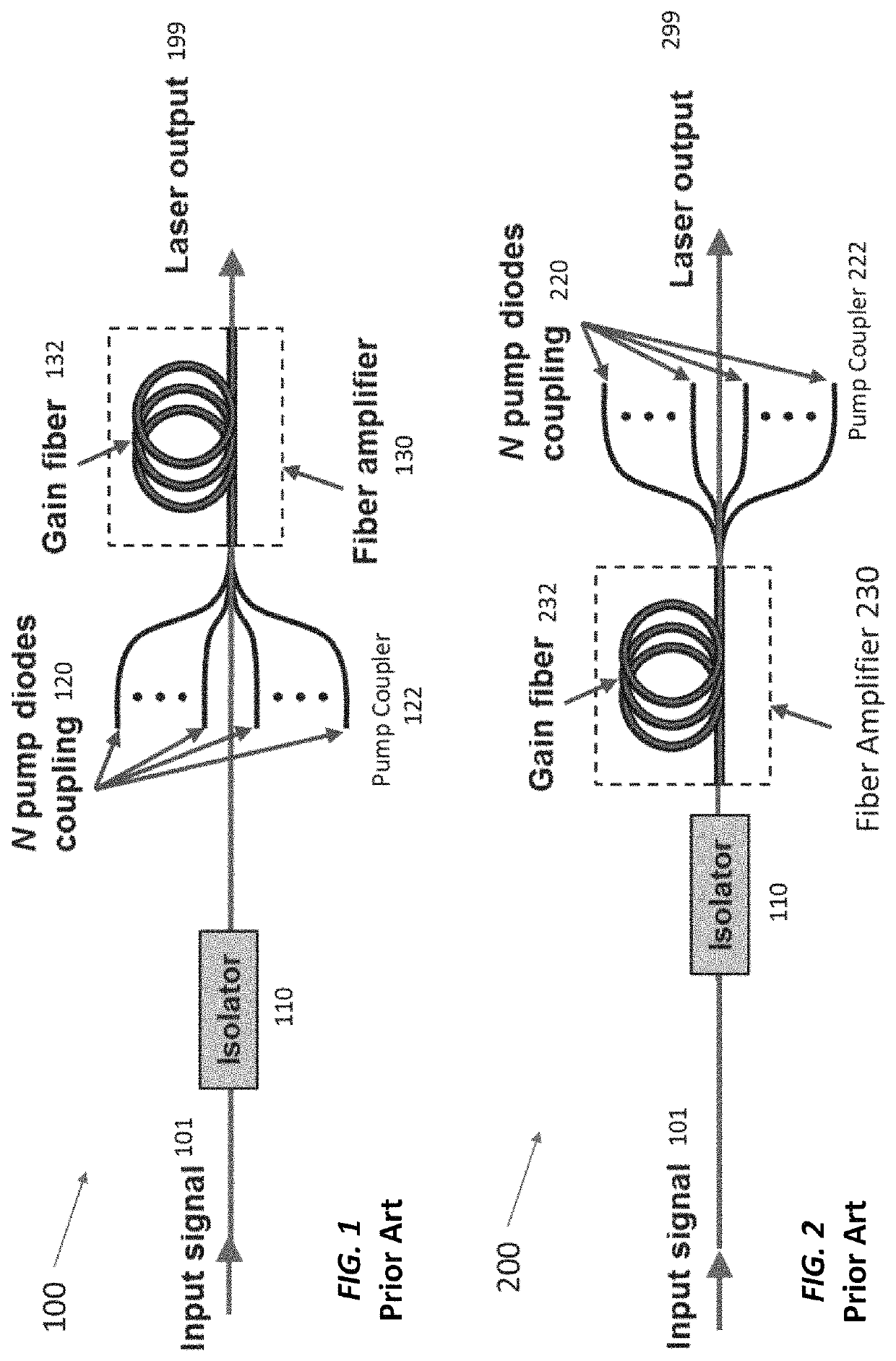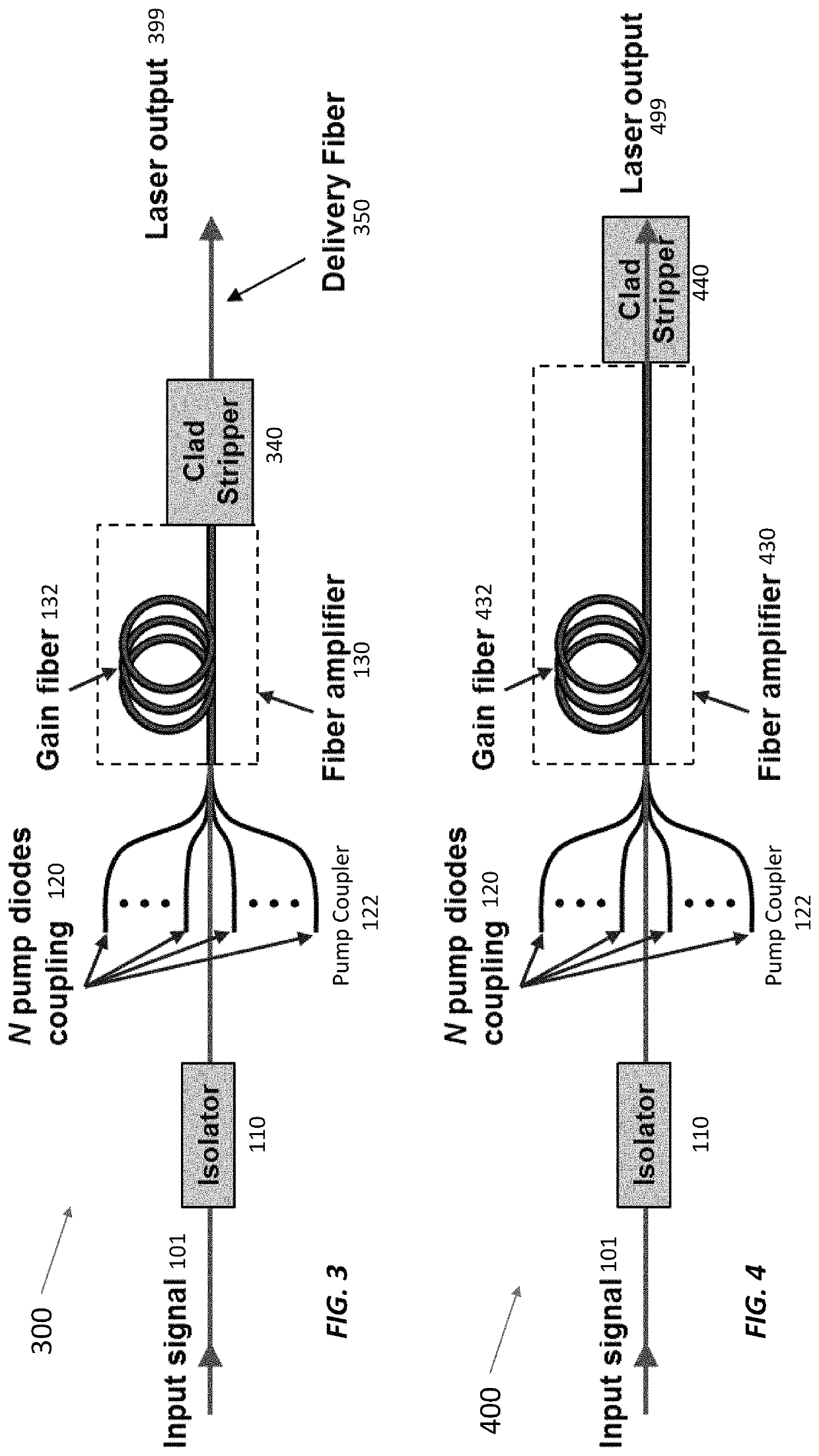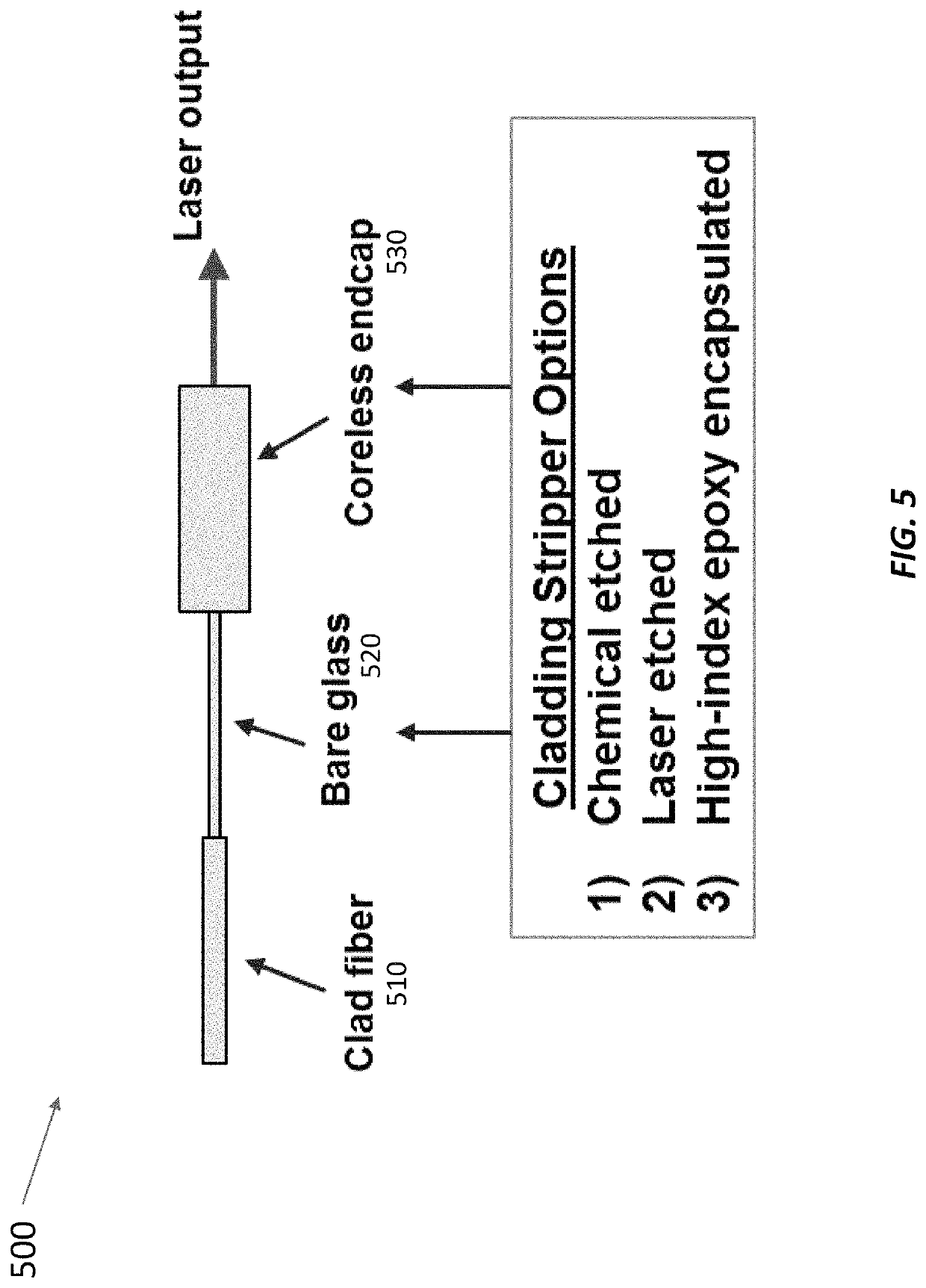Single-frequency fiber amplifier with distal cladding stripper
a single-frequency fiber amplifier and distal cladding technology, which is applied in the direction of instruments, optical elements, optics, etc., can solve the problems of reducing the linewidth. , to achieve the effect of reducing the power threshold for sbs onset, reducing the maximum achievable output power of the fiber amplifier, and reducing the linewidth
- Summary
- Abstract
- Description
- Claims
- Application Information
AI Technical Summary
Benefits of technology
Problems solved by technology
Method used
Image
Examples
Embodiment Construction
lass="d_n">[0024]The power threshold for the onset of stimulated Brillouin scattering (SBS) is proportional to the cross-sectional area of the signal beam divided by the effective fiber length, which is the fiber length weighted by the internal power (for constant power, the effective fiber length is the actual fiber length). For gain fibers, the effective length is shorter than the actual length because the sections of fiber with low optical power do not contribute significantly to SBS. In practice, for high-power fiber amplifiers, one can usually ignore the SBS contributions for sections of fiber where the power is less than half the total output power. The beam area can be enlarged by using large-mode area (LMA) fibers, but this can degrade the beam quality. The fiber length can be kept short by using high-absorption fibers and / or operating the fiber laser with low pump absorption if laser efficiency is not a driver. In other words, if the fiber is too short to effectively absorb...
PUM
| Property | Measurement | Unit |
|---|---|---|
| power threshold | aaaaa | aaaaa |
| threshold | aaaaa | aaaaa |
| threshold | aaaaa | aaaaa |
Abstract
Description
Claims
Application Information
 Login to View More
Login to View More - R&D
- Intellectual Property
- Life Sciences
- Materials
- Tech Scout
- Unparalleled Data Quality
- Higher Quality Content
- 60% Fewer Hallucinations
Browse by: Latest US Patents, China's latest patents, Technical Efficacy Thesaurus, Application Domain, Technology Topic, Popular Technical Reports.
© 2025 PatSnap. All rights reserved.Legal|Privacy policy|Modern Slavery Act Transparency Statement|Sitemap|About US| Contact US: help@patsnap.com



